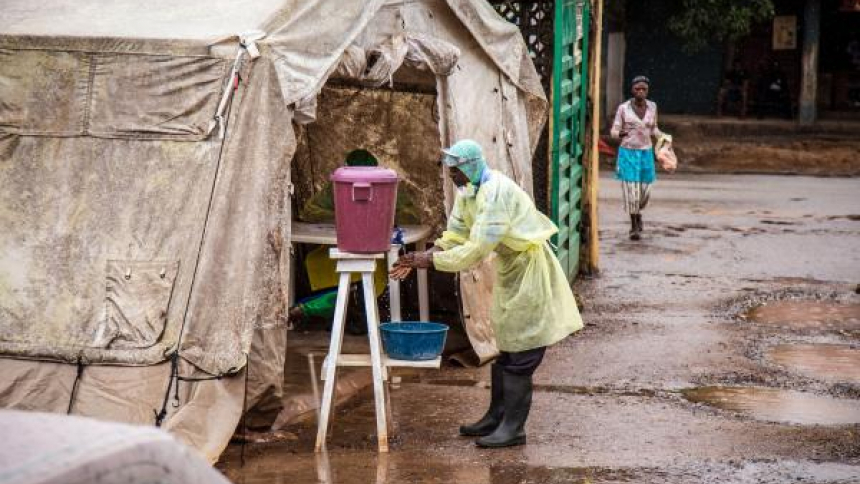The 2014 West African Ebola outbreak was massively devastating, resulting in 28,646 cases and 11,323 deaths by March 27, 2016. This event spurred research including model building and selection of management options. Most Ebola models use projected caseloads to project epidemic trajectory, yet among these models, projections vary widely. CIDD researchers Shou-Li Li, Ottar Bjørnstad, Matthew Ferrari, Riley Mummah, and Katriona Shea, along with Michael Runge, Christopher Fonnesbeck, Michael Tildesley, and William Probert asked whether or not these differences in projected caseload led to different choices in management strategy. They simulated and analyzed Ebola outbreaks using 37 published Ebola models with differing parameters and model structures to elucidate how model choices affect optimal management strategy, which informs decision-makers.
Li et al.’s Ebola outbreak simulations resulted in a mean projected caseload of 5,615 +/- 2,705 (SD), ranging from 184 to 9,887 cases. Despite this difference, the majority of models recommended similar management strategies. Researchers then selected the optimal action based on the effect size of that action (measured as the percentage change in projected caseload compared with a no intervention baseline) and found that reducing funeral transmission was the optimal action, followed by reducing community transmission. Reducing case fatality ratio and increasing hospital transmission were not optimal management strategies. Optimal management strategy was closely associated with model structure; meaning models with and without hospitals and/or funerals resulted in different conclusions. Finally, whether or not an action is “optimal” depends on its effect size. For example, reducing community transmission is rarely optimal when effect size is <30%, but is often optimal when effect size is >50%.
Li et al. conclude that although models differ in structure, optimal management strategies are often the same. Additionally, model uncertainty plays a larger role in selection management strategy than uncertainty in caseload projection. In fact, resolving model uncertainty could improve management by up to 11%. Reducing model uncertainty could be an area of further investigation. This research provides a framework for evaluating multiple approaches to the same disease outbreak. Even in situations where only one model exists, Li et al. found that management strategies impacting R0 the most are the best. These results are important in epidemic management and this methodology allows for broader application in infectious disease research.
Synopsis written by Ellen Brandell
Image caption: A health worker cleans his hands with chlorinated water before entering an Ebola screening tent Monday at a government hospital in Kenema, Sierra Leone. The World Health Organization cites 1,848 cases of the deadly disease across West Africa.
Michael Duff, NPR News August 12, 2014
Publication Details
S. Li, O. Bjørnstad, M. Ferrari, R. Mummah, M. Runge , C. Fonnesbeck , M. Tildesley , W. Probert , K. Shea
Essential information: Uncertainty and optimal control of Ebola outbreaks
Journal: Proceedings of the National Academy of Sciences
1617482114
DOI Reference




